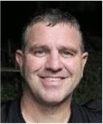Conceptual model of the Lower Permian Kingia Sandstone (northern Perth Basin, Western Australia) as an alternative energy resource
Trey Meckel A * , Matthew Wright B , Graham Blair B , Mark Ballesteros C , Andrew Farley B and Anthony Cortis DA Monteverde Energy, Melbourne, Vic., Australia.
B Strike Energy, Perth, WA, Australia.
C EathConnect, Perth, WA, Australia.
D IGESI Consulting, Ottawa, Canada.
The APPEA Journal 62 S449-S455 https://doi.org/10.1071/AJ21069
Accepted: 28 February 2022 Published: 13 May 2022
© 2022 The Author(s) (or their employer(s)). Published by CSIRO Publishing on behalf of APPEA.
Abstract
The geothermal potential of the Kingia aquifer in the northern Perth Basin has been identified. In order to further assess resource potential, the occurrence, conditions, and properties of the Kingia Sandstone have been considered further. A new regional correlation supports the Kingia Sandstone being a regionally extensive unit deposited along the northern margin of the syn-depositional Dandaragan Trough. The unit is part of a falling-stage to lowstand system containing lower and upper shoreface, coastal, beach, and estuarine sands. Gross Kingia Sandstone thickness varies from 16 m on flanking terraces to at least 71 m in the basin depocenter. At depth, reservoir properties are preserved where iron-rich clay grain coatings inhibit cementation and preserve primary porosity. In such cases, net reservoir ranges from 3 to 58 m thick (18 m mean) and net porosity range is 12–19 p.u. (15 p.u. mean). The prevailing geothermal gradient is ~37°C/km with heat flow in excess of 90 mW/m2. Resultant Kingia aquifer temperatures exceed 115°C. Given the presence of hot, porous Kingia aquifer, the potential for geothermal power generation is strong. Production of Kingia brine to surface facilities allows for power conversion via established binary Organic Rankine Cycle (ORC) technology. A scalable Kingia opportunity could help to meet Western Australia’s decarbonisation aspirations by contributing to the replacement of coal-fired and gas-fired power plants, plus supply of low-carbon power to local urea, hydrogen, and gas projects. An enhanced understanding of Kingia porosity distribution, reservoir compartmentalisation, flow performance, and ultimate energy delivery remain key uncertainties subject to future de-risking activities.
Keywords: aquifer, compartmentalization, geothermal, gradient, heat flow, Kingia Sandstone, permeability, Permian, Perth Basin, porosity, renewable energy, stratigraphy, temperature.

Dr Trey Meckel has more than 30 years of experience at the forefront of the global energy sector, including significant experience in petroleum E&P, R&D, and alternative energy. In July 2021, Trey founded Monteverde Energy, focused on alternative energy resource identification, project management and maturation, and consultancy. He is also a co-founder of Groundbreaking Energy, a privately funded alternative energy start-up currently building a portfolio of projects. Independently, he advises a private Australian venture capital group that invests in disruptive technology and is a Tutor for the University of Cambridge Institute for Sustainability Leadership. Previously, he was Vice President of Global Exploration, New Ventures, & Geosciences for one of Latin America’s most successful energy companies. Earlier in his career, Trey worked for Shell and Woodside, and was a co-founder and managing partner of a SE Asian E&P start-up. Trey received his PhD from the Swiss Federal Institute of Technology (ETH Zürich), his MA in Geology from the University of Texas at Austin, USA, and his BA with Honors from Williams College, USA. Trey is a member of the Australian Geothermal Association and the American Association of Petroleum Geologists. |

Matthew Wright has over 15 years of oil and gas experience and graduated from Curtin University (Perth) with a BSc in Geology. He has spent the first 12 years working with Baker Hughes supporting Australia and Asia-Pacific operations as a log analyst and geosteering supervisor while being involved in advancements in both LWD and Mudlogging technology. Matthew joined Strike Energy in early 2020 as Senior Geoscientist just prior to the start of the West Erregulla appraisal campaign and is responsible for operations and formation evaluation. |

Graham Blair holds an MSc in Geoscience from the University of Aberdeen (UK) and has 25 years of experience across geoscience, petroleum engineering, and upstream management with international operators. Graham has worked across the globe, supporting development and exploration positions in the North Sea, West Africa, South America, the Middle East, and Asia. He has rich experience leading the de-risking and maturation of conventional, unconventional, and now geothermal energy resources. |

Mark Ballesteros is a geoscientist with 35+ years of experience in the petroleum and geothermal industries including projects in Australia, Papua New Guinea, the Philippines, Indonesia, Thailand, Europe, South America, and New Zealand. Mark has been actively involved in the geothermal industry since 2010 and served as Exploration Manager for Green Rock Energy and Business Manager for their Perth Basin geothermal project. Mark was a founding director of Mid West Geothermal Power, which was acquired by Strike Energy in 2021. He is a Director of the Australian Geothermal Association and a member of the American Association of Petroleum Geologists and the International Geothermal Association. |

Andrew Farley graduated from the University of Newcastle (Australia) in 2002 with a BSc in Geology. He has 20 years of experience working with onshore oil and gas operators on exploration and development projects in all five mainland states of Australia. Prior to joining Strike Energy in 2012, Andrew worked with AGL Energy in Sydney. Andrew has held a number of technical positions at Strike Energy, becoming Exploration Manager in September 2019. Andrew has been a key member of the Strike team during the design and execution of the company’s Exploration and Development projects, most notably the West Erregulla discovery in the Perth Basin, and now geothermal exploration. |

Anthony (Tony) Cortis is a Professional Geologist (APEGA) and principal in Igesi Consulting Inc. based in Canada. Tony has worked closely with Strike Energy Ltd since 2017 and has been part of teams evaluating both deep coals in the Cooper Basin and the various plays in the North Perth Basin. He holds a BSc in Geology from Laurentian University and MSc in Geology from the University of Manitoba. His company provides integrated upstream and venture management consulting to clients. Previously he worked 28 years for both Shell Canada and Royal Dutch Shell in various roles both in Canada and worldwide. |
References
Allis R, Moore J, Anderson T, Deo M, Kirby S, Roehmer R Spencer T (2013) Characterizing the power potential of hot stratigraphic reservoirs in the western U.S. In ‘Proceedings, Thirty-Eighth Workshop on Geothermal Reservoir Engineering, Stanford University, Stanford CA’. Stanford Geothermal Program Workshop Report SGP‐TR‐198. Available at: https://pangea.stanford.edu/ERE/pdf/IGAstandard/SGW/2013/Allis.pdf [accessed 19 April 2022].Anderson TC (2012) Review of permeability characteristics in drilled, sediment-hosted geothermal systems. Report submitted as part of DE-EE5128 “Novel Geothermal Development of Deep Sedimentary Systems in the United States.” Energy and Geoscience Institute, 66.
Ballesteros M, Pujol M, Aymard D, Marshall R (2020) Hot sedimentary aquifer geothermal resource potential of the Early Permian Kingia Sandstone, North Perth Basin, Western Australia. GRC Transactions 44, 477–503.
Cortis A, Farley A, Lewis D, Cheong S, Chia A, Zhang W (2021) The West Erregulla gas discovery. Implications for an extensive Permian play fairway across the onshore northern Perth Basin, Western Australia. The APPEA Journal 61, 594–599.
| The West Erregulla gas discovery. Implications for an extensive Permian play fairway across the onshore northern Perth Basin, Western Australia.Crossref | GoogleScholarGoogle Scholar |
Dillinger A (2017) Depositional history and sequence-stratigraphic framework of an Early Permian shallow-marine sedimentary system, Northern Perth Basin, Australia. PhD thesis, The University of Western Australia School of Earth Sciences, Perth, WA, Australia, 259p. https://doi.org/10.4225/23/5afb8a524287d
Dowey P (2012) Prediction of clay minerals and grain-coatings in sandstone reservoirs utilising ancient examples and modern analogue studies. PhD Thesis, University of Liverpool, UK. 377p.
Ferdinando D (2020) The Kingia ‘Fm’ – what is it, where is it, and what it shouldn’t be. Presentation slides from WA Basins Workshop, December 2020. December 2020.
| Crossref |
Ferdinando DD, Baker JC, Gongora A, Pidgeon BA (2007) Illite/smectite clays preserving porosity at depth in Lower Permian reservoirs, northern Perth Basin. The APPEA Journal 47, 71–89.
| Illite/smectite clays preserving porosity at depth in Lower Permian reservoirs, northern Perth Basin.Crossref | GoogleScholarGoogle Scholar |
Gibson H, Seikel, R, FitzGerald D, Middleton M Ghori A (2011) 3D geology, temperature, heat flow and thermal gradient modeling of the north Perth Basin, Western Australia. Paper Number: SEG-2011-1227 presented at the 2011 SEG Annual Meeting, San Antonio, Texas, September 2011. Available at https://www.researchgate.net/publication/261612691_3D_geology_temperature_heat_flow_and_thermal_gradient_modeling_of_the_north_Perth_Basin_Western_Australia [Accessed 25 November 2021]
Gies RM (1984). Case history for a major Alberta deep basin gas trap; the Cadomin Formation. In ‘Elmworth: Case Study of a deep Basin Gas Field: AAPG Memoir 38’. (Ed. J Masters), pp. 115–140. (AAPG)
| Crossref |
Griffiths J, Worden RH, Wooldridge LJ, Utley JEP, Duller RA, Edge RL (2019) Estuarine clay mineral distribution: modern analogue for ancient sandstone reservoir quality prediction. Sedimentology 66, 2011–2047.
| Estuarine clay mineral distribution: modern analogue for ancient sandstone reservoir quality prediction.Crossref | GoogleScholarGoogle Scholar |
Hot Dry Rocks Pty Ltd (2008) Geothermal energy potential in selected areas of Western Australia (Perth Basin). Unnumbered report for the Department of Industry and Resources. Department of Industry and Resources, Western Australia. 85p.
Jennings S, Hasterok D, Lucazeau F (2021) ThermoGlobe: extending the global heat flow database, Journal TBD. Available at http://heatflow.org/heat-flow/ [Accessed 7 December 2021]
Michael K, Bachu S, Buschkuehle BE, Haug K, Talman S (2009). Comprehensive characterization of a potential site for CO2 geological storage in central Alberta, Canada. In ‘Carbon dioxide sequestration in geological media—State of the science: AAPG Studies in Geology’, Vol. 59. (Eds M Grobe, JC Pashin, RL Dodge), pp. 227–240. (AAPG).
Moslow TF, Zaitlin BA (2008) Tight Gas Reservoirs of the Western Canada Deep Basin. Search and Discovery Article #10166. Available at https://www.searchanddiscovery.com/documents/2008/08269moslow/ndx_moslow.pdf [Accessed 1 December 2021]
Robins JC, Kolker A, Flores-Espino F, Pettitt W, Schmidt W, Beckers K, Pauling H, Anderson B (2021) 2021 U.S. geothermal power production and district heating market report. National Renewable Energy Laboratory (NREL), 112p.
Sturrock S, Ferdinando D, Allgöwer A (2019) Northern Perth Basin Field Excursion Guidebook (Australian Exploration Geoscience Conference, 2–5 September 2019, Perth, Australia). Electronic copy available on request from authors.
Tupper N, Matthews E, Cooper G, Furniss A, Hicks T, Hunt S (2016) The Waitsia Field, onshore North Perth Basin, Western Australia. The APPEA Journal 56, 29–44.
| The Waitsia Field, onshore North Perth Basin, Western Australia.Crossref | GoogleScholarGoogle Scholar |
Wooldridge LJ, Worden RH, Griffiths J, Utley JEP (2019) How to quantify clay-coat grain coverage in modern and ancient sediments. Journal of Sedimentary Research 89, 135–146.
| How to quantify clay-coat grain coverage in modern and ancient sediments.Crossref | GoogleScholarGoogle Scholar |
Yildirim Ozcan N Akkurt G (2011) The Effects of Fluid Temperature on Geothermal Power Plant Design. Proceedings of the Climamed 2011 (IV Mediterranaen Congress of Climazitation), Madrid, Spain. Available at https://www.researchgate.net/publication/276876720_The_Effects_of_Fluid_Temperature_on_Geothermal_Power_Plant_Design [Accessed 8 August 2021]


